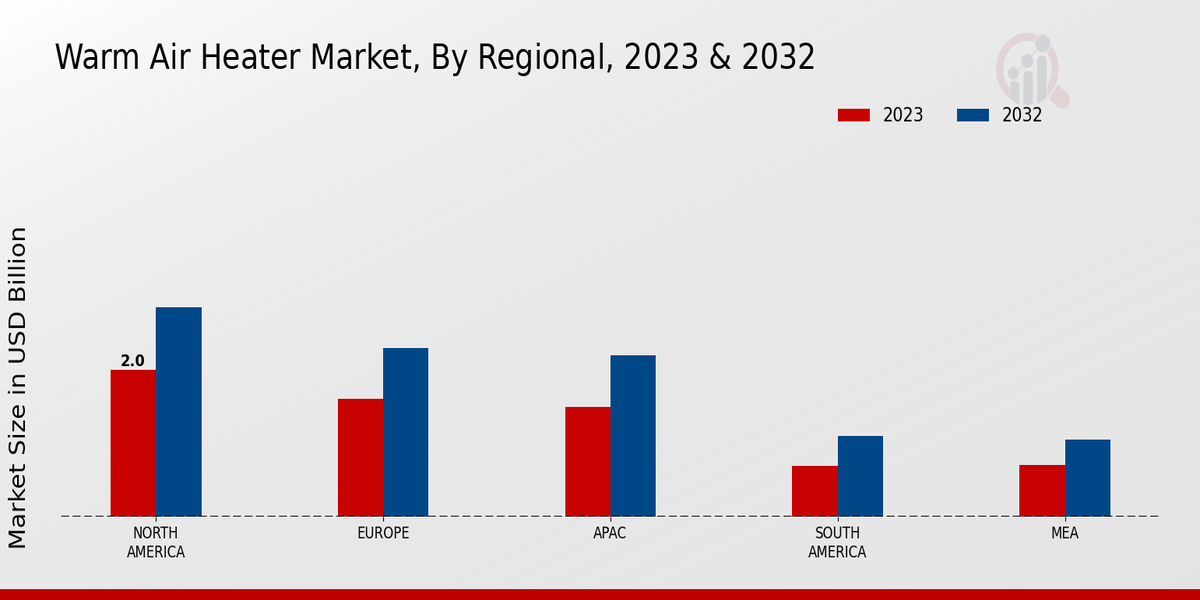The Warm Air Heater Market is characterized by its diverse range of participants, each contributing unique strengths and innovations to meet the varying needs of consumers and businesses. Competitors in this market leverage advanced technology, energy efficiency, and innovative designs to capture market share.
The increasing demand for sustainable and efficient heating solutions, coupled with stringent regulations regarding emissions and energy consumption, has significantly impacted the competitive landscape. Companies are not only striving to enhance product offerings but are also focusing on strategic partnerships, mergers, and acquisitions to expand their market presence.
With a growing emphasis on customer-centric solutions, the competition has intensified, prompting organizations to invest in research and development for advanced heating systems that align with modern environmental standards.
Heil Heating and Cooling Products has established a formidable presence in the Warm Air Heater Market, known for its comprehensive selection of heating solutions designed for both residential and commercial applications.
The company is recognized for its commitment to quality and reliability, utilizing cutting-edge technology to develop energy-efficient warm air heaters that meet customer needs while minimizing environmental impact.
Heil emphasizes high performance and durability in its products, which are supported by a strong warranty and customer service framework.
The brand's industry reputation is further bolstered by its robust manufacturing capabilities and extensive distribution network, allowing for the widespread availability of its products. Heil's dedication to innovation and efficiency not only enhances its competitive advantage but also solidifies its standing as a trusted name in the heating market.
Daikin Industries stands out in the Warm Air Heater Market as a leading manufacturer renowned for its technological prowess and innovation in heating solutions. The company is at the forefront of developing energy-efficient systems that are both environmentally friendly and user-friendly.
Its warm air heaters are designed to deliver optimal performance under varying conditions, making them suitable for a range of applications. Daikin's strong focus on research and development enables it to introduce advanced features that cater to the evolving needs of consumers, fostering customer loyalty and satisfaction.
The brand's commitment to quality and performance is reflected in its various certifications and accolades within the industry. With a well-established global presence, Daikin Industries continues to expand its reach and strengthen its market position, making it a formidable competitor in the warm air heater sector.


















Leave a Comment